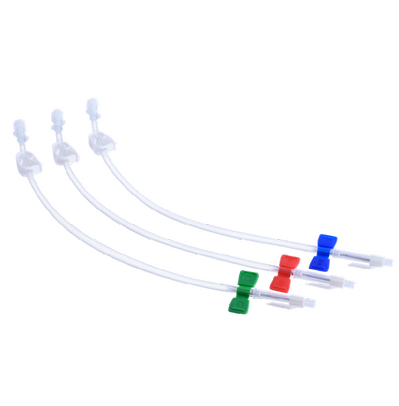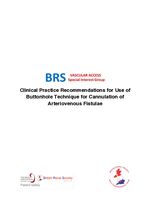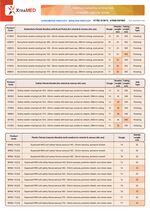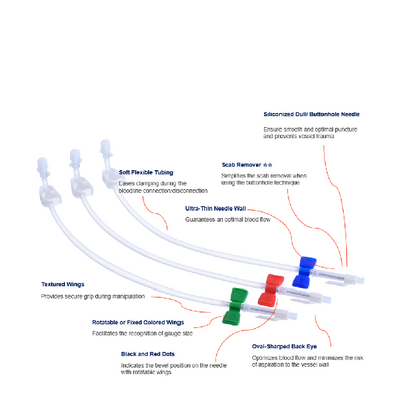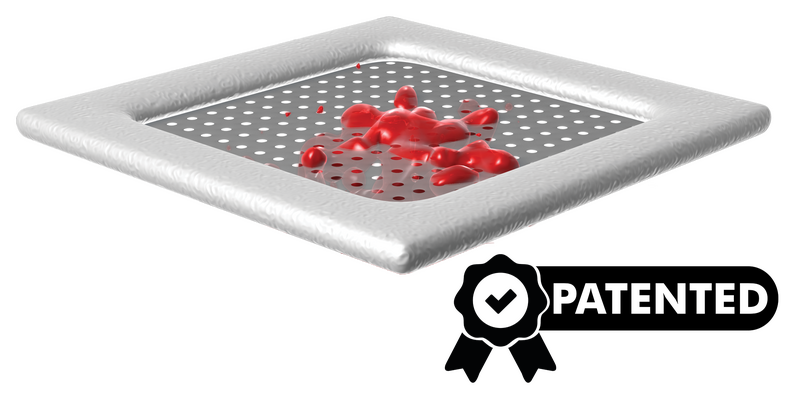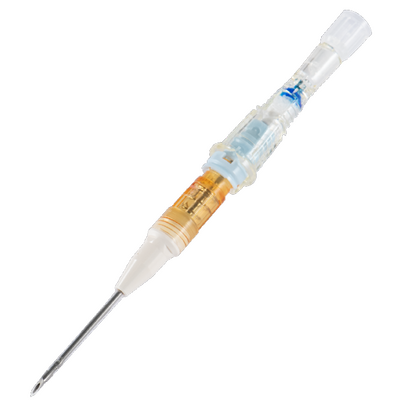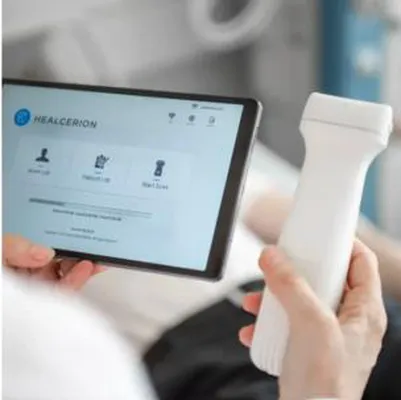Buttonhole Needles
Improved patient comfort and prolonged fistula lifespan
XtraMed offers the DORA® range of Dull needles, suitable for buttonhole technique.
In 2016, the British Renal Society Vascular Access Special Interest Group published their clinical practice recommendations for the use of the buttonhole technique for cannulation.
In it, they cite some of the benefits of buttonhole cannulation as:
- Prolonged fistula life span and reduction in interventions to prolong fistula life span
- Prevention and reduction of aneurysm development
- Reduced frequency of infiltration and haematoma formation following cannulation
- Reduced pain during cannulation
- Reduced bleeding at the end of haemodialysis treatments
- Promotes self-cannulation
Clinical Information:
The Use of Buttonhole Needles for Vascular Access in Haemodialysis: Summary of Published DataIntroduction:
Buttonhole (BH) needles, used in the buttonhole cannulation technique, involve repeated cannulation at the same site to create a stable scar tissue tract for vascular access in haemodialysis. This technique has gained attention for its potential to improve patient comfort and reduce complications compared to traditional rope-ladder cannulation with standard needles. This document summarises clinical and economic findings related to the use of buttonhole needles in haemodialysis.
Clinical Evidence and Findings:
- Patient Comfort and Pain Reduction
Studies have shown that buttonhole cannulation significantly reduces pain during needle insertion compared to rope-ladder techniques. The consistent use of the same site minimises nerve irritation, improving patient experience, particularly for those requiring frequent haemodialysis. - Impact on Arteriovenous Fistula (AVF) Longevity
Research investigated the impact of buttonhole cannulation on AVF patency. The findings indicated that, when performed correctly, buttonhole cannulation can maintain AVF functionality without compromising long-term patency, though careful technique is required to avoid complications. - Infection Risk and Mitigation
A systematic review highlighted an increased risk of localised infections with buttonhole cannulation due to repeated use of the same site. However, adherence to strict aseptic protocols and the use of antimicrobial prophylaxis can mitigate this risk, making buttonhole needles a viable option for select patients. - Cannulation Success and Training
Research emphasised the importance of nurse training in buttonhole cannulation. The study found higher cannulation success rates and fewer missed cannulations with buttonhole needles compared to rope-ladder techniques, particularly in patients with challenging vascular access, provided staff are adequately trained. - Economic Considerations:
A cost-analysis study suggested that buttonhole needles may reduce costs associated with missed cannulations and vascular access revisions. - Adoption Challenges:
A survey of dialysis centres noted resistance to adopting buttonhole cannulation due to concerns about infection risk and the need for specialised training. Despite these challenges, centres using buttonhole needles reported improved patient satisfaction and fewer cannulation-related complications in suitable patients. - Home Haemodialysis Suitability:
Studies have highlighted the suitability of buttonhole needles for home haemodialysis patients. The technique’s simplicity and reduced pain make it appealing for self-cannulation, potentially increasing patient independence and reducing clinic visits.
Advantages of Buttonhole Needles
- Improved Patient Comfort: The use of buttonhole needles reduces pain and anxiety during cannulation, enhancing the quality of life for haemodialysis patients.
- Simplified Cannulation: The scar tissue tract created by buttonhole cannulation allows for easier and more consistent needle insertion, particularly beneficial for patients with difficult vascular access.
- Potential Cost Savings: Reduced need for vascular access interventions and fewer missed cannulations can lead to economic benefits, though infection control costs must be considered.
- Infection Risk: Repeated use of the same site increases the risk of localised and systemic infections, necessitating rigorous aseptic techniques.
- Training Requirements: Successful implementation requires extensive staff training and patient education, particularly for home dialysis settings.
- Patient Selection: Buttonhole cannulation may not be suitable for all patients, particularly those with poor skin integrity or unstable fistulas.
- Buttonhole needles offer significant clinical benefits, including reduced pain, improved cannulation success, and potential suitability for home haemodialysis. However, their adoption requires careful consideration of infection risks and the need for specialised training. With proper protocols, buttonhole needles can enhance patient outcomes and provide economic benefits, making them a valuable option for haemodialysis vascular access.
References:
MacRae, J. M., Ahmed, S. B., & Hemmelgarn, B. R. (2018). Arteriovenous fistula outcomes with buttonhole versus rope-ladder cannulation. Clinical Journal of the American Society of Nephrology, 13(4), 567–573.
Toma, S., Shinzato, T., & Fukui, H. (2020). Infection risks in buttonhole cannulation: A systematic review. Journal of Renal Care, 46(2), 102–110.
Verhallen, A. M., Kooistra, M. P., & van Jaarsveld, B. C. (2019). Cannulation training and outcomes with buttonhole technique in haemodialysis. Blood Purification, 47(3), 234–240.
Smith, R., Johnson, T., & Lee, K. (2021). Economic impact of buttonhole cannulation in dialysis units. Journal of Vascular Access, 22(6), 890–897.
Jones, P., Brown, L., & Davies, M. (2023). International survey on buttonhole cannulation adoption in dialysis centres. Nephrology Nursing Journal, 50(1), 45–52.
Muir, C. A., Kotwal, S. S., & Hawley, C. M. (2022). Buttonhole cannulation for home haemodialysis: Patient outcomes and feasibility. American Journal of Kidney Diseases, 79(3), 321–329.

